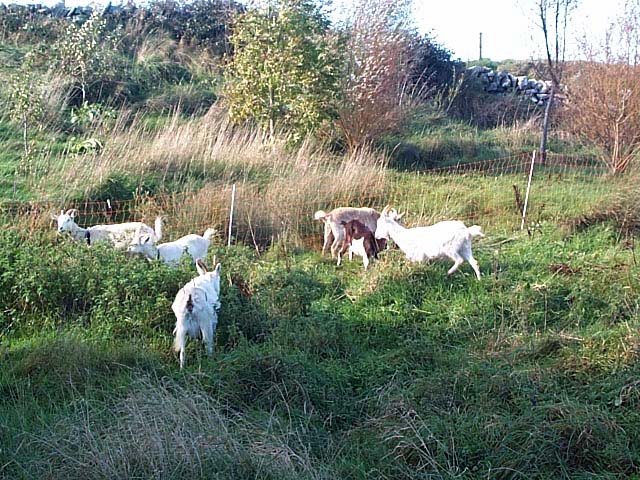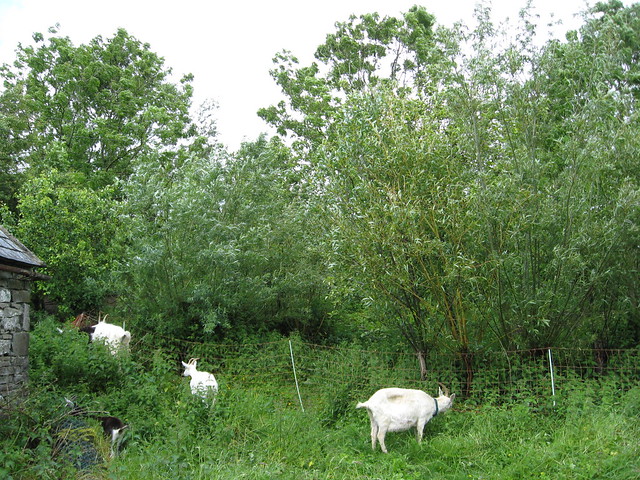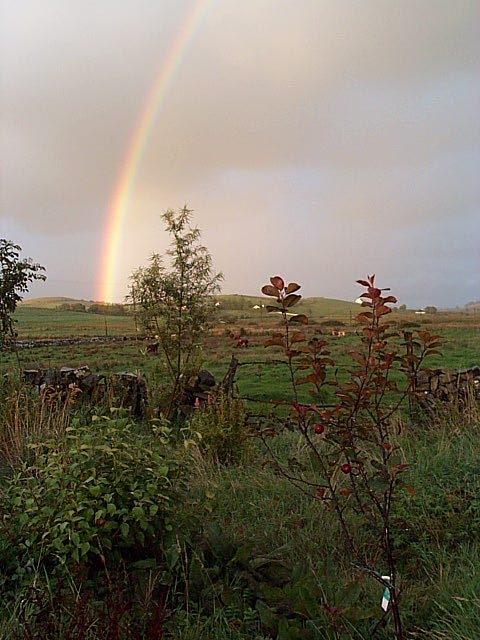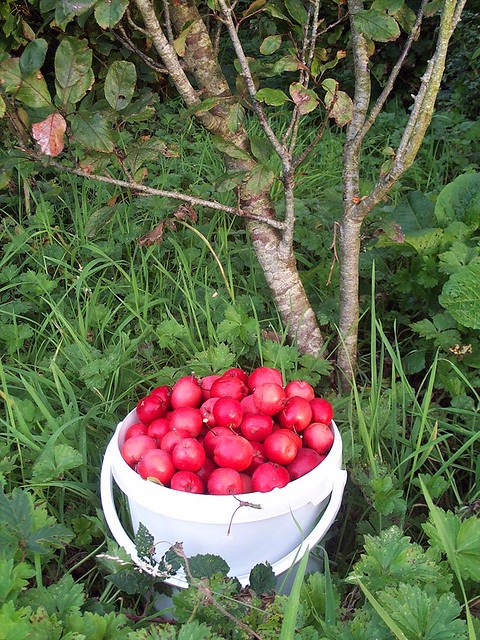


|
Commenced:
|
01/01/1995 |
|---|---|
|
Submitted:
|
24/05/2012 |
|
Last updated:
|
15/10/2021 |
|
Location:
|
Clogher, Kilfenora, Co. Clare, IE |
|
Climate zone:
|
Cool Temperate |
(projects i'm involved in)
Project: Sailchearnach
Posted by Ute Bohnsack about 13 years ago
May 2007. Looking northwards. Polytunnel with shelterbelt to break the strong south-westerly winds. The flowering trees are crabapples ('John Downie'), the other two very small fruit trees are an apple and a plum.
Mid June 2012. The polytunnel looks very shaded but that's because the photo was taken at almost 21.00 and the sun is coming from the North-West (it's almost summer solstice - the "turning of the year", probably a very strange concept for anyone living near the equator ...).

October 2001. Looking West, up the drumlin, the eastern side of which we live on. You can see how the wind swept in from the southwest. In 2001 we had just started using electric netting to let the goats graze areas formerly inaccessible to them because they would have killed the trees. Two young pear trees are visible in the top left of the photo. 
June 2012. The trees (willows, ash) have grown well and are sheltering the entire hillside (and our cottage) from the West. The willows in front were planted to shelter the tender early pear blossom from harsh easterly winds and have already been coppiced twice for firewood. Hidden behind that wall of willow are not just the Conference pear visible in the first photo ('Concorde' pear can be seen on the very left) but also another European pear ('Gorham'), 2 Asian pears ('20th Century', 'Chojuro'), a few willows that we pollard every 7 years, and 2 plums ('Czar', 'Opal'). A chicken run was located under these trees for a few years. The chickens have just moved to a new area and the bare, well fertilized ground is used to grow potatoes. I also just got my hands on a wildflower mix for bees that should do nicely there.
Incidentally, one of the goats in the first picture is still around, now aged 15.

January 2002. A small section of the "woodland" sheltering the property from the East. The previous owner had planted some ash, sycamore, hawthorn, larch and oak trees in 1994 which we underplanted/edge planted with crabapples, black and red currants, Jostaberries, Worcesterberries, hazelnuts/cobnuts, red dogwood, a Black walnut, a few horse chestnuts, a bunch of willows, some sea buckthorn, shrub roses and lots of daffodils towards the driveway. There is also a chicken-run in this plot. The young tree on the right is a Siberian crabapple (Malus communis X Robusta).

June 2012. The red dogwood was coppiced last winter for firewood and woodchips. The red-leaved tree in the background is a myrobalan plum that has yet to yield any fruit. But the Siberian crab (with a blackcurrant in front of it) has yielded quite reliably - the little apples make superb jelly.


You must be logged in to comment.
Note: The various badges displayed in people profiles are largely honesty-based self-proclamations by the individuals themselves. There are reporting functions users can use if they know of blatant misrepresentation (for both people and projects). Legitimacy, competency and reputation for all people and projects can be evidenced and/or developed through their providing regular updates on permaculture work they’re involved in, before/after photographs, etc. A spirit of objective nurturing of both people and projects through knowledge/encouragement/inspiration/resource sharing is the aim of the Worldwide Permaculture Network.
 |
MemberA member is a permaculturist who has never taken a PDC course. These cannot become PDC teachers. Members may be novice or highly experienced permaculturists or anywhere in between. Watch their updates for evaluation. |
|---|---|
  |
Permaculture MatchmakerOne of these badges will show if you select your gender and the "I'm single, looking for a permaculture partner" option in your profile. |
 |
PDCPeople who claim to have taken a Permaculture Design Certificate (PDC) course somewhere in the world. |
 |
PDC VerifiedPeople who have entered an email address for the teacher of their PDC course, and have had their PDC status verified by that teacher. Watch their updates for evaluation. |
 |
PRI PDCPeople who’ve taken a Permaculture Research Institute PDC somewhere in the world. |
 |
PDC TeacherPeople who claim to teach some version of PDC somewhere in the world. |
 |
PRI TeacherWith the exception of the ‘Member’ who has never taken a PDC, all of the above can apply to become a PRI PDC Teacher. PRI PDC Teachers are those who the PRI recognise, through a vetting board, as determined and competent to teach the full 72-hour course as developed by Permaculture founder Bill Mollison – covering all the topics of The Designers’ Manual as well as possible (i.e. not cherry picking only aspects the teacher feels most interested or competent in). Such teachers also commit to focussing on the design science, and not including subjective spiritual/metaphysical elements. The reason these items are not included in the PDC curriculum is because they are “belief” based. Permaculture Design education concerns itself with teaching good design based on strategies and techniques which are scientifically provable. PRI PDC Teachers may be given teaching and/or consultancy offerings as they become available as the network grows. |
 |
Aid WorkerThe individual with this badge is indicating they are, have, or would like to be involved in permaculture aid work. As such, the individual may or may not have permaculture aid worker experience. Watch their updates for evaluation. |
 |
ConsultantThe individual with this badge is indicating they are, have, or would like to do paid permaculture design consultancy work. As such, the individual may or may not have permaculture consultancy experience. Watch their updates for evaluation. |
 |
Community ProjectCommunity projects are projects that help develop sustainable community interaction and increase localised resiliency. |